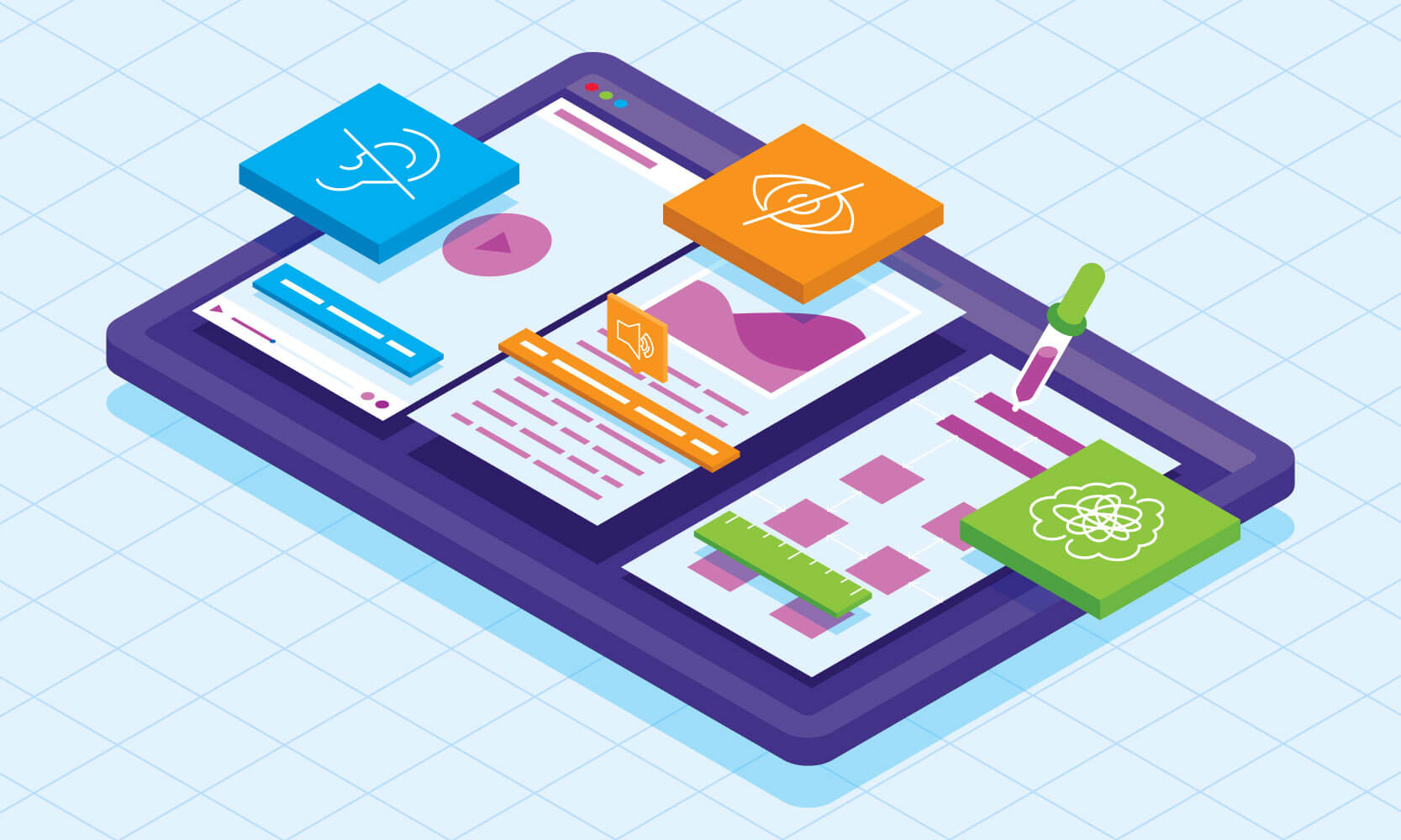Developments in technology have revolutionized the way we acquire knowledge and skills. With the ever-expanding convenience of online courses and virtual classrooms, education is no longer confined to traditional settings. With this transformation, it’s crucial to recognize the importance of digital accessibility in eLearning. In the last few years, “accessibility” has moved beyond a buzzword, with more organizations viewing it as an absolute necessity. Accessibility ensures that individuals with disabilities (hearing, mobility, vision, learning, or other) can equally participate and benefit from online courses, and that the content is designed for ALL learners.
According to the World Health Organization, over 15% of the global population has some form of disability. By implementing accessibility features such as closed captioning, alternative text descriptions, and considering color contrast, eLearning courses can accommodate individuals with visual, hearing, mobility, or cognitive impairments, therefore reaching 15% more learners. These elements enable them to engage with the learning material effectively, ensuring they receive the same educational opportunities as their peers.
Meeting Legal and Ethical Obligations
Ensuring accessibility in eLearning is not just a matter of convenience; in many cases it is also a legal and ethical responsibility. Many countries have legislation in place, such as WCAG, 508 Compliance, and the Websites and Software Accessibility Act (from September 2022), that mandate equal access to educational resources for individuals with disabilities. By adhering to these regulations, eLearning providers demonstrate their commitment to inclusivity and social responsibility.
Enhancing Learning Outcomes
When eLearning resources are designed with accessibility in mind, it enhances the overall learning outcomes for all learners since disabilities aren’t always permanent, they can be temporary or situational as well. For instance, closed captions not only benefit individuals with hearing impairments, but also people who speak a different language, or those learning in a noisy environment. Visual aids, such as infographics or diagrams, can help learners with dyslexia or cognitive disabilities comprehend information more effectively. By incorporating accessibility features, eLearning courses can cater to different learning styles and preferences, enabling learners to grasp and retain information more successfully.
How to Improve Accessibility
The Web Content Accessibility Guidelines (WCAG) is a good place to start checking your courses for accessibility. These guidelines are based on the principles of the acronym POUR: Perceivable, Operable, Understandable, Robust.
- Perceivable – making sure the content is perceivable to all users, including visual and auditory impairments. This would include features such as alt-text, making sure the color contrast on-screen is a high enough ratio to make text (especially) legible.
- Operable – the user can interact with content using a standard input device. This means interactive elements and controls such as buttons, tabs, links, sliders etc, can be operated via keyboard as well as a mouse.
- Understandable – the content needs to use clear and simple language to all users, including individuals with cognitive or reading disabilities. Half of the adults in America can’t read at an 8th grade level, according to the Organization for Economic Cooperation and Development. This needs to be kept in mind when developing learning content.
- Robust – Is the course compatible with wide range of technologies? Some of these include screen readers, keyboard shortcuts, speech recognition, text size adjustment, to name a few.
Keeping accessibility in mind while you design
- Use Alt-text (alternative text) to describe images that are important to the understanding of the material. Hide images used just for decoration from the screen readers.
- Include closed captions or transcripts for all audio and video.
- Use a text size of at least 12, and make sure the text has enough contrast to the background. Using san-serif fonts is also suggested to make reading easier.
- Use simple, straightforward language.
- Make buttons, or other clickable areas, 44×44 pixels or larger. This will help those who are visually impaired, as well as assist with fine motor skills.
- Make sure your courses and platform are compatible with keyboard navigations and screen readers.
- Keep screens free of clutter to minimize confusion and distraction.
- Avoid the use of timers unless necessary for the purpose of the training.
Keep these things at the forefront of your mind during course development and you’ll be covering the bases for accessibility, however this is not a comprehensive list and we are always learning ways to improve, as technology for accessibility is constantly expanding.
By embracing accessibility, eLearning professionals can create equal opportunities, promote inclusive learning environments, enhance learning outcomes, meet legal obligations, and drive innovation. As we continue to advance in the digital realm, it is essential to prioritize accessibility in eLearning to ensure that no learner is left behind. By doing so, we empower education for all and create a world where knowledge knows no boundaries.

